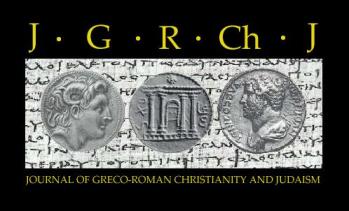15.1 | Adam Z. Wright College of Emmanuel and St. Chad, Saskatoon, SK, Canada This article argues that the current theories of literary dependence are unable to adequately explain the apparent differences in certain pericopes found within the Synoptic traditions. Instead, it is more reasonable to conclude that the differences are due to each Gospel writer independently consulting the oral traditions preserved by the earliest believers. The data gathered from a number of studies concerning memory reveals that people are more likely to remember the gist of a story, or event, and not the intricate details. The lapse of such detail is then conflated by imagination, a neurological process that occurs in the same part of the brain that processes memory. The result is that a person will be able to recall the gist of an event, but will recall the intricate details of the story quite differently as time passes. When applied to the Synoptic traditions, this best explains why certain pericopes that relate the same event have a high level of correspondence with regard to generalities but a very low level of grammatical correspondence. |
15.2 | Jason J. Ripley St Olaf College, Northfield, MN, USA Like gladiators in the arena, competing ideologies in Rome’s early imperial period battled one another with the rhetoric of honor and shame. Despite sharply divergent definitions of the actions that accrue glory, these ideological contests often culminated in expressions of spectacular, voluntary deaths that shared a common rhetorical framework. In this paper I argue that John’s stylization of Jesus’ death both participates in and subverts aspects of the Romana mors. I first outline the imperial configuration of honor, and then I analyze the anti-imperial rhetoric in Plutarch’s narration of the Roman republican martyr Cato. Finally, I examine John’s portrayal of Jesus’ death, showing how it rhetorically resonates with other glorious Roman deaths, and yet ideologically subverts them by configuring glory around Jesus’ crucifixion. As such, John’s hybridized discourse of Jesus’ anti-violent laying down of his life in love enunciates a radical reconfiguration of social life, freed from imperial violence. |
15.3 | Peter Reynolds Southwestern Assemblies of God University, Waxahachie, TX, USA Luke combines the traditions of the commissioning of the first disciples, Jesus preaching from a boat and the great catch of fish into one narrative, which focuses the symbolic force of each story to project an image of the mission of the Church. I contend that the boat served as a metaphor for collective fate in Greco-Roman and Jewish sources, and that both Matthew and Luke use the boat as a symbol for the church. The tradition of Jesus preaching from the boat is used by both Mark and Matthew to emphasize the chasm between those who are in the boat and those on the shore. Luke’s arrangement makes this barrier porous by including the miracle of the great catch. The multitude are not left out, but are brought into the boat of the Church. There is therefore room in the boat. |
15.4 | Bart B. Bruehler Indiana Wesleyan University, Marion, IN, USA Christianity’s early growth was at least partially due to its effective religious rhetoric. Sociorhetorical interpretation provides tools for dynamically analyzing the imaging, textures and impact of religious discourse in the Mediterranean world. However, the dynamics of how discourse produces rhetorical force has not been fully explained. Insights from rhetorical invention, conceptual blending and counterfactual thinking provide approaches that can be deployed to explore how rhetorical forces flow into, through and out of texts. The annunciation to Mary in Lk. 1.26-38 serves as a test case for the various vectors of rhetorical force: from the reconfiguration of previous traditions in the rhetorical moment of the writing to the ways that this text may have generated persuasive emergent meanings in the midst of later cultural situations. |
15.5 | Michael T. Miller and Mariano Troiano Friedrich-Alexander-Universitat Erlangen-Nurnberg, Germany; Universidad Nacional de Cuyo, Mendoza, Argentina This study argues that there is a tradition, arising from a ‘Jewish milieu’, based around the exegesis of select biblical passages, indicating that the messiah bears the Divine Name. This tradition appears to predate the Christian movement, and is referenced also in rabbinic literature. In the first section we highlight a tradition regarding the relationship between the Name of God and the messiah, the righteous and Jerusalem, a tradition which is shared by the Talmud and the New Testament book of Revelation. The next section will look at the pre-existence of the messiah’s name, which appears to be known by several groups in the early centuries of the Common Era. The fact that several different groups share this tradition points to the existence of an important idea which may be independent of each of these specific manifestations, whether Enochic, rabbinic or Christian, as this tradition was common across several Jewish sects in Late Antiquity. |
15.6 | Andrew R. Krause ACTS Seminaries of Trinity Western University, Langley, BC, Canada Psalms of Solomon 2 utilizes a plethora of hymnic and poetic tropes in order to describe a series of historical events that deeply affected Jerusalem at the onset of Roman rule. One of its more interesting poetic elements is applied to the death of Pompey, which is described using language usually found in apocalyptic literature for the death of the Judaeans’ enemies. Portraying Pompey as a dragon while recounting his ignoble death in Egypt, this presentation justifies and takes credit for the death of an enemy, as the prayers of the Judean faithful were more efficacious than the knives of Caesar’s assassins. This should not be surprising, given the poetic nature of these compositions and the inclusion of other apocalyptic rhetorical elements in this collection, such as messianism, the periodization of history and alterity. |

